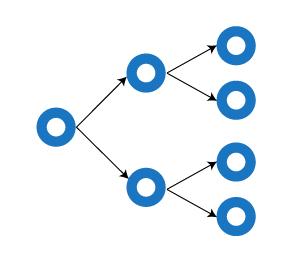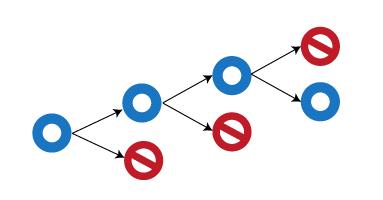Sometimes researchers need to study a group of population where identifying or finding potential subjects can be difficult because they are either deviant or socially isolated e.g. homeless people, drug addicts, members of an elite golf club etc.
Snowball sampling is a technique where a researcher picks the first few samples and either recruits them or asks them to recommend other subjects they know who fit the description of samples needed. This referral technique goes on and on, increasing the size of the respondent population like a snowball rolling down a hill until the researcher has sufficient data to analyze. Snowball sampling is also called chain referral sampling.
Where to Use Snowball Sampling
For some populations, snowball sampling is the only viable sampling strategy because the study group is secretive or hard to reach because of social stigma, illegality of their work or lack of data.
Some of such cases are
- there is no obvious list of the population of interest
- homeless people
- members of an elite golf club
- difficulty to locate subjects
- people suffering from rare diseases
- less willingness to identify themselves due to social stigma
- prostitutes
- victims of sexual assault
- gay, bisexual or transgender people
- secretiveness or illegality of the organization
- terrorists
- hackers
- religious extremists
Types of Snowball Sampling
- Linear Snowball Sampling

Subject refers only one other subject - Exponential Non-Discriminative Snowball Sampling

Subject gives multiple referrals and each referral gives some more until required sample size is reached. - Exponential discriminative Snowball Sampling

Subject refers multiple people but only one is chosen as sample
Process for Snowball Sampling
- Identify the population to study
- Choose some samples to get the snowball rolling
- Ask the initial subjects to nominate others who they know fit the description of potential subjects
- Repeat the above process until you have sufficient data
Advantages of Snowball Sampling
-
Referral system helps find samples quickly
Since you may not have exhaustive list of the population for your study, the referral system helps to a great extent to get appropriate samples quickly at conveniently low cost. For instance, It can be too difficult to trace out those persons who go to brothels regularly or those who use narcotic drugs or those who are prostitutes, but the referral system helps minimizing the problem. - Low cost solution
This sampling technique can be implemented with little workforce and without a lot of planning, making it cost and time efficient compared to other methods. -
Works for hesitant subjects
Some persons do not want to come forward in public researches due to their need for confidentiality. Drug users, prostitutes, brothel goers, spies may not be willing to reveal their identity if you ask them in public if they are so. Snowball Sampling helps for this situation as this system asks to those who are familiar with the potential samples. -
Secretive groups can be identified easily
Some social groups are secret by nature. The classification, stratification and other analysis on them by a new person is quite difficult. As this method takes information from those persons who are already familiar with other potential samples, the process becomes quite easier. As an example, the classification of drug users according to their frequency (Casual or Addict) will only be revealed if you ask someone who is already quite familiar with the drug users in that locality. And this helps to explores other insights of such groups as well.
Disadvantages of Snowball Sampling
- Potential sampling bias
The method is liable to various forms of sampling bias. People associate with and nominate their peers who share very similar traits. This means that the researcher might only be able to reach out to a small section of the population. - Chance of lack of co-operation
Respondents may not be willing to co-operate citing ethical reasons or fear of danger to their lives. The researcher has to gain the trust of the sample before they are willing to recommend other potential subjects. This brings the biases of both the researcher and the subject into play because how the individual researcher behaves affects the research output. - Peer network might not exist
If there is a communication gap among the population, the whole process gets halted. For Example, Drugs users at their initial stage might not be interacting with other drug users around them and thus might not be able to nominate anyone.